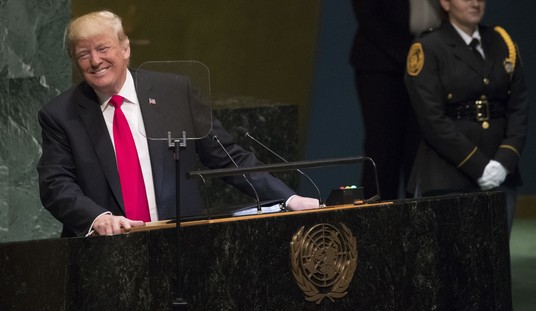Last week, the Department of Interior announced a new rule to put “conservation leases” on the same footing as grazing, mining, and other productive uses on lands managed by the Bureau of Land Management (BLM). BLM oversees 245 million of 640 million total public land acres.
The official announcement said the agency will “improve the resilience of public lands in the face of a changing climate; conserve important wildlife habitat and intact landscapes; plan for development; and better recognize unique cultural and natural resources on public lands.”
A 75-day public comment period will soon follow.
“As the nation continues to face unprecedented drought, increasing wildfires and the declining health of our landscapes, our public lands are under growing pressure. It is our responsibility to use the best tools available to restore wildlife habitat, plan for smart development, and conserve the most important places for the benefit of the generations to come," saidSecretary Deb Haaland in a news release. “As we welcome millions of visitors to hunt, fish and recreate on our public lands each year, now is the time to improve the health and management of special places.”
Since the agency actively undermines public lands access and sportsmen’s opportunities, I’m convinced this rule change jeopardizes true conservation.
Recommended
Let’s first identify groups supporting the measure.
Are they true conservationist, pro-hunting and pro-fishing organizations? Or preservationists aligned with radical environmentalists who want to undermine multiple-use?
The Natural Resources Defense Council praised the rule as a “timely opportunity to bring greater balance” to BLM. Defenders of Wildlife, a notoriously anti-hunting outfit, stressed the importance of the rule for BLM “to rebalance its priorities and safeguard habitats for wildlife that are trending toward extinction…”
The Center for Biological Diversity - a serial litigant actively fights to stop hunting, commercial fishing, and energy development - lamented the rule not going far enough.
“The agency’s time would be better spent addressing the root problems of public lands degradation and protecting these treasured places for future generations,” CBD’s Randi Spivek told E&E News. “Instead of addressing destructive mining, fossil fuel extraction and grazing, this rule basically restates what’s already the law. Major improvements are needed.
If preservationists are praising this rule, that's a bad sign.
Secondly, the rule claims it’ll clarify conservation is a “use” within the The Federal Land Policy and Management Act of 1976’s multiple-use framework. The FLPMA, however, already implies conservation of lands is to be considered alongside mining, forest managing, ranching, grazing, and other activities:
…a combination of balanced and diverse resource uses that takes into account the long-term needs of future generations for renewable and nonrenewable resources, including, but not limited to, recreation, range, timber, minerals, watershed, wildlife and fish, and natural scenic, scientific and historical values; and harmonious and coordinated management of the various resources without permanent impairment of the productivity of the land and the quality of the environment with consideration being given to the relative values of the resources and not necessarily to the combination of uses that will give the greatest economic return or the greatest unit output.
Reuters cited two examples of “responsible” development that would result here, claiming, “For instance, a solar energy project on public lands could compensate for the loss of wildlife habitat by restoring habitat in another area. Leases could also be used to restore migration corridors for big game or to generate tradable offsets for carbon markets by preserving forests.”
Converting high-quality productive lands into low-quality lands with environmentally-destructive renewable projects leads to deforestation. And carbon offsets, for what it’s worth, are well-documented scams.
If these are the results, the rule would have disastrous consequences.
Thirdly, when assessing the DOI rule carefully one sees it borrows language from opponents of multiple-use management who prefer a questionable “public use” alternative.
In 2020, Aspen Institute published a paper entitled “Public Lands, We the People” calling for policymakers to “reimage” the management of public lands to “deliver climate benefits.”
Notably, it argued the Interior and Agriculture Secretaries should “redesign federal public land management to prioritize climate change as a central component of the missions of their various management agencies.” And it urged a hasty transition to “public use” management of federal lands to create a “system that addresses the twin crises of climate change and biodiversity loss.”
Notice the similarities between the DOI rule and Aspen Institute paper. That’s not coincidental; that’s intentional.
Senator Martin Heinrich (D-NM), who lost the bid to be Biden’s Interior Secretary to Deb Haaland, echoedthe Aspen Institute.
"Given the desire of Americans for outdoor recreation, environmental justice, climate solutions, the preservation of biodiversity, clean water and rural economic development, we really need to reorientate the Department of the Interior and the U.S. Forest Service toward those objectives," Heinrich told E&E News. "The mission of public land management should really be focused on serving the American public and safeguarding the values that deliver all of those public benefits."
This isn’t the first attempt to reimagine multiple-use management of public lands.
Under the Obama administration, BLM 2.0 Planningaimed to move away from longstanding practices by prioritizing non-uses and giving under influence to preservationist environmentalists. In 2017, Congress rectified the problem by overturning the policy through the Congressional Review Act because it underminedboth commercial and recreational opportunities on public lands. This means the agency can’t re-promulgate a rule.
Much to the Biden administration’s chagrin, the U.S. Geological Service (USGS) already determined 41 percent of public lands managed by the federal government are already off-limits to multiple uses. Therefore, this rule is unnecessary and equally dangerous.
Given the similarities to BLM 2.0 Planning, true conservationists must fight to ensure DOI’s new Public Lands Rule isn’t enacted.

























